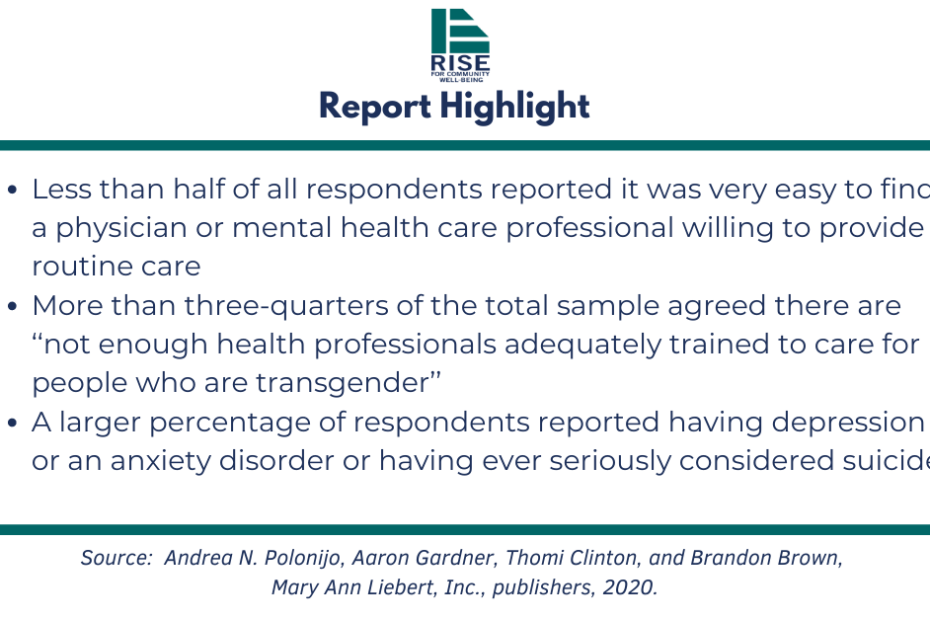Transgender and Gender Nonconforming Patient Experience in the Inland Empire, California
Authors: Andrea Polonijo and Erin Gardner
Publication: Transgender Health (volume 1, issue 4)
Date: December 2020
Analyzing secondary data from a 2015 survey of 90 transgender and gender nonconforming individuals in California’s Inland Empire, this study reports frequencies of physical and mental health and health care access and discrimination outcomes and differences by age, race/ethnicity, and sex assigned at birth. Nearly three-quarters of respondents reported positive physical health, yet only about half reported positive mental health—an outcome poorer for respondents <50 years. Lesser than 50% found it very easy to find providers for routine care and only 16% found it very easy to find a transgender-competent provider, underscoring the need for more health professional training.
Transgender and gender nonconforming (TGNC) individuals face well-documented experiences of stigma, discrimination, and victimization, which are linked to adverse health outcomes and elevated levels of psychological distress.1,2 Although TGNC individuals need access to routine physical and mental health care and, often, gender-affirming treatments, they experience high rates of exclusion and discrimination in mainstream health care settings and barriers to accessing TGNC-competent care.3,4
Although a growing body of research has documented physical and mental health outcomes and barriers to care among TGNC populations,1–4 local data collection remains key to identifying issues affecting the TGNC community in specific regions, ensuring the fair distribution of public health resources, and developing accessible health services.5 This study examines physical health, mental health, health care access, and health care discrimination among TGNC individuals in California’s Inland Empire.
Consisting of Riverside and San Bernardino counties, the Inland Empire spans >27,000 square miles (∼70,000 square kilometers) and has a population of nearly 4.5 million—exceeding that of 25 U.S. states.6 Assuming ∼0.6% of the U.S. population is transgender,7 an estimated 27,000 TGNC individuals live in the Inland Empire, making it a critical region for assessing TGNC health care needs. The area is highly racially and ethnically diverse, with >50% of the population identifying as Hispanic, >7% as Asian, and >7% as black,6 which may make it comparable with other racial-ethnically diverse U.S. regions. Few regions of this size have undertaken similar studies to understand the health and wellness of transgender and gender-nonconforming people in racial-ethnically diverse settings.


